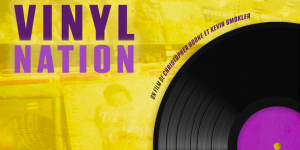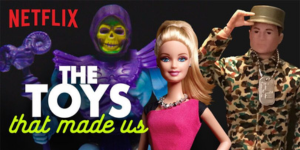|
A few months ago, I found myself queuing outside a game store, chasing what felt like a pot of gold—the
Pokémon Prismatic Evolutions Elite Trainer Box Case.
Sold out everywhere and making Pokémon fans—and those hoping to flip it for double the price—go crazy, this set wasn’t for me but for my sister, who has been collecting Pokémon cards for as long as I can remember.
As I stood in line, watching the stock go down with each person ahead of me, my heart started racing. Then what seemed like an unlikely dream happened—I got the last box. The rush? Unreal.
But once the excitement settled, a question lingered: why do we collect?
Or maybe more precisely—what is it about holding onto objects that feels, or at least gives us the impression, so essential to being human?
The desire to keep, to catalogue, to group and preserve—whether books, shells, vinyl records, or matchbooks—has long outlived its practical function. Through conversations with friends and strangers, I’ve learned that many people collect vinyl without even owning a record player. It’s the object itself that matters: a memory, a symbol, a gesture toward something felt. Sometimes even a nostalgia for a time never lived.
The shape of that instinct is changing. In a landscape defined by scarcity marketing, limited-edition drops, unboxing culture, resale platforms, and algorithm-driven desire, the collector moves between curation and consumption—a presence both nostalgic and hyper-contemporary. From figurines like
Sonny Angels and
Labubu to glow-in-the-dark
Bad Bunny Crocs,
consumer ritual collides with speculation and spectacle. Each item becomes a reveal, a social moment, a chance to feel part of something.
But collecting isn’t just a symptom of the present. From
cabinets of curiosities to Comic-Con meetups, from museum walls to bedroom shelves, it has long blended status with preservation, care with community. In Barcelona, collectors still gather every Sunday at
Sant Antoni market,
trading cards, magazines, and stories—a ritual that resists speed and thrives on connection.
Maybe collecting is just another way of making sense of what we fear will slip through—objects standing in for moments, memories, or versions of ourselves.
What do you hold onto? What stories do your shelves, drawers, or saved tabs tell?
I’d love to know what collecting means to you—whether it’s deliberate or accidental, chaotic or carefully arranged.
Estelle
|
Some numbers
|
$422.56 billion
|
The global collectibles market is projected to reach over $422 billion by 2030, growing steadily at 5.5% annually.
|
|
11.9 billion
|
In the 2023–2024 fiscal year, nearly 12 billion Pokémon cards were sold globally—the highest number ever reported.
|
|
94%
|
A recent survey found that 94% of Gen Z and millennials are interested in collectibles.
|
|
Ways to get inspired
From preserving memories to organizing curiosities, these platforms help you collect, archive, and make sense of the world—visually, intellectually, or just for fun.

Public Domain Image Archive
A rich online repository of visuals that celebrates image-collecting in all its forms.
|

Royal Menus
A delightful archive of royal dining menus, where caviar meets calligraphy and historical gastronomy becomes a visual feast.
|

Are.na
A collaborative platform where digital collecting becomes a way to link ideas, aesthetics, and archives.
|
|
Plugged in
In the age of digital curation, the collector’s shelf has found its way in the grid. Instagram profiles act as open cabinets of curiosities, where aesthetics, repetition, and storytelling intersect. From grocery hauls to subway hands, these feeds transform the mundane into something archival—deliberate or accidental.
|
Plugged in
In the age of digital curation, the collector’s shelf has found its way in the grid. Instagram profiles act as open cabinets of curiosities, where aesthetics, repetition, and storytelling intersect. From grocery hauls to subway hands, these feeds transform the mundane into something archival—deliberate or accidental.
|
Through the curators’ eyes
Long reads, essays, and in-depth explorations that look at collecting through the lens of artists and curators.
|
Through the lens
Film and video give us another way to observe the collector’s motives—from obsessive habits to heartfelt nostalgia.

|
Our Brains are Wired to Collect Things, Daniel Krawczyk, 2016, (TEDxSMU)
Neuroscientist Daniel Krawczyk explores the brain’s role in our urge to collect—tracing how this human behavior connects with memory, identity, and cognitive function.
|

|
Vinyl Nation, Kevin Smokler & Christopher Boone, 2020 (documentary)
A warm, layered look at the vinyl revival—its collectors, culture, and the emotional pull of analog sound in a digital world.
|

|
The Toys That Made Us, Brian Volk-Weiss, 2017–2019 (docuseries)
The series dives into the history and fandom of iconic toy lines, from Barbie to LEGO, mixing pop culture with personal stories.
|
|
|
What’s on our (digital) plate

|
The Residence — a fun and light murder mistery taking place in the White House.
Orbital, by Samantha Harvey — a little book of reflections by astronauts on life on Earth.
m_d_n_f_ — the Instagram page of artworks by by Michael Dumontier & Neil Farber.
Cassandra — a German-language thriller about the country’s first smart home.
post mortem — comeback album after 9 year of silence by Niccolò Contessa and his musical project I Cani’s
Still Blooming — Jeff Goldbum launched his new merch and is having the most fun on his social media promo
|
|
|
NOC is a constant work-in-progress. We want to hear your thoughts, recommendations and ideas—reply to the newsletter via email or write to us on social media (LinkedIn or Instagram). Your input will help shape where we go next!
You can browse past editions on our website.
Was this email forwarded to you? You can register to our newsletter here.
One ask from us: to avoid our newsletter landing in your spam inbox, add our email address as a contact.
|
|